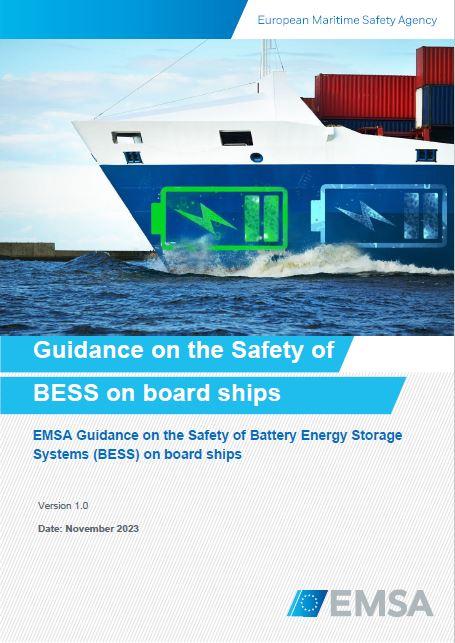The U.S. Environmental Protection Agency (EPA) has released a complete set of safety guidelines targeting the full lifecycle of battery energy storage systems (BESS). This new framework aims to enhance the safe design, installation, operation, and decommissioning of BESS facilities amid the rapidly growing adoption of energy storage technologies nationwide. Industry stakeholders and regulators alike are expected to turn to the EPA’s detailed guidance as a critical resource for minimizing risks associated with these complex systems, which play an increasingly pivotal role in the transition to cleaner energy grids.
US EPA unveils detailed safety protocols for battery energy storage systems
The US Environmental Protection Agency has issued a set of stringent safety protocols designed to oversee battery energy storage systems (BESS) throughout their entire lifecycle. These protocols address critical aspects such as design, installation, operation, maintenance, and decommissioning, ensuring enhanced safety and environmental protection. Key highlights include mandatory fire suppression standards, enhanced thermal runaway prevention practices, and rigorous monitoring systems to detect early signs of battery degradation or malfunction.
Essential elements of the new EPA safety framework include:
- Comprehensive risk assessment prior to system deployment
- Standardized training requirements for operators and first responders
- Periodic safety audits and continuous performance evaluations
- Clear guidelines for emergency response and incident reporting
- Recycling and disposal protocols to minimize environmental impacts
| Lifecycle Stage | Key Safety Measures | EPA Recommendations |
|---|---|---|
| Design & Engineering | Thermal Management & Fireproofing | Adopt industry best practices & third-party verification |
| Installation | Site Safety Evaluation & Compliance Checks | Follow standardized protocols & EPA guidance |
| Operation | Continuous Monitoring & Preventative Maintenance | Implement real-time diagnostics and sensor arrays |
| Decommissioning | Safe Dismantling & Waste Management | Ensure certified recycling and disposal pathways |
Key risks identified in full lifecycle management of BESS installations
Throughout the lifecycle of Battery Energy Storage Systems (BESS), several critical risks have been spotlighted by the EPA’s latest guidance, emphasizing the importance of meticulous oversight from design to decommissioning. Among the most prominent challenges are the risks of thermal runaway events and chemical hazards inherent to lithium-ion battery technologies. Additionally, unforeseen mechanical failures during transportation and installation pose critically important threats to safety, demanding stringent protocols and specialized handling procedures.
Beyond these, operational risks such as improper system integration and inadequate maintenance can exacerbate vulnerabilities, leading to potential fire hazards and environmental contamination. The guidance further highlights the importance of emergency preparedness, noting risks related to delayed response times and insufficient training for first responders. Below is a concise overview of the major risks identified:
| Lifecycle Phase | Key Risks | Potential Consequences |
|---|---|---|
| Design & Manufacture | Battery defects, Material flammability | System failure, Fire hazards |
| Transportation & Installation | Mechanical damage, Handling errors | Leakage, Thermal events |
| Operation & Maintenance | System integration flaws, Insufficient monitoring | Unnoticed faults, Escalated fire risks |
| Decommissioning | Improper disposal, Chemical exposure | Environmental harm, Worker injuries |
Recommended practices for emergency response and accident prevention
Effective emergency response begins with thorough preparedness and regular training tailored to Battery Energy Storage Systems (BESS). Operators should implement pre-established emergency response plans that include clear dialogue protocols,designated roles,and rapid isolation procedures to contain potential incidents. Frequent simulation drills coupled with updated hazard assessments can substantially reduce response times and minimize damage.The EPA emphasizes the importance of cross-agency coordination involving local fire departments, medical responders, and environmental authorities to ensure a unified and efficient approach.
Accident prevention hinges on rigorous maintenance schedules and leveraging advanced monitoring technologies to detect early signs of system stress or failure. Key practices include:
- Continuous thermal management to avoid overheating risks.
- Real-time fault detection systems integrated with automated shutdown capabilities.
- Proper ventilation and fire suppression installations tailored to specific battery chemistries.
- Regular inspection of electrical components and physical infrastructure.
| Best Practice | Benefit |
|---|---|
| Emergency drills every 6 months | Improves first responder efficiency |
| Automated fault detection | Reduces false alarms and downtime |
| Thermal imaging monitoring | Identifies hotspots early |
| Routine electrical checks | Prevents short circuits and failures |
Guidance emphasizes sustainability and end-of-life disposal standards
The EPA’s new guidance pioneers a holistic approach to Battery Energy Storage Systems (BESS) management, spotlighting not only operational safety but also the environmental impact throughout the system’s lifecycle. This comprehensive framework underscores the importance of enduring materials and manufacturing practices, pushing manufacturers to adopt greener alternatives that reduce ecological footprints. Additionally, stakeholders are urged to integrate design features that facilitate easy disassembly, recycling, and reuse, aiming to maximize resource efficiency across all phases of BESS deployment. Key sustainability recommendations include:
- Use of recyclable and non-toxic materials in battery modules
- Implementation of modular designs for simplified repair and upgrade
- Strategies to minimize energy consumption during production and operation
The guidance also sets forth explicit end-of-life disposal protocols,establishing high standards to prevent environmental contamination and promote circular economy principles. Facilities are encouraged to work with certified recycling partners and employ advanced recovery techniques that reclaim critical metals and components, reducing waste generation. To aid compliance, the EPA provides a straightforward matrix categorizing disposal methods by battery chemistry and condition:
| Battery Chemistry | Recommended Disposal Method | Environmental Benefit |
|---|---|---|
| Lithium-Ion | Certified recycling with metal recovery | Reduces landfill and recovers valuable minerals |
| Lead Acid | Refurbishment or component extraction | Prevents lead contamination, promotes reuse |
| Sodium Sulfur | Neutralization and hazardous waste disposal | Ensures safe chemical handling and waste isolation |
The Conclusion
As the US EPA releases its comprehensive full lifecycle safety guidance for battery energy storage systems, the industry is poised to navigate enhanced regulatory standards that prioritize environmental protection and public safety. This move marks a significant step toward establishing clearer protocols amid the rapid expansion of energy storage technologies. Stakeholders across the energy sector will be closely monitoring implementation efforts as these guidelines begin shaping future project progress and operational practices.




